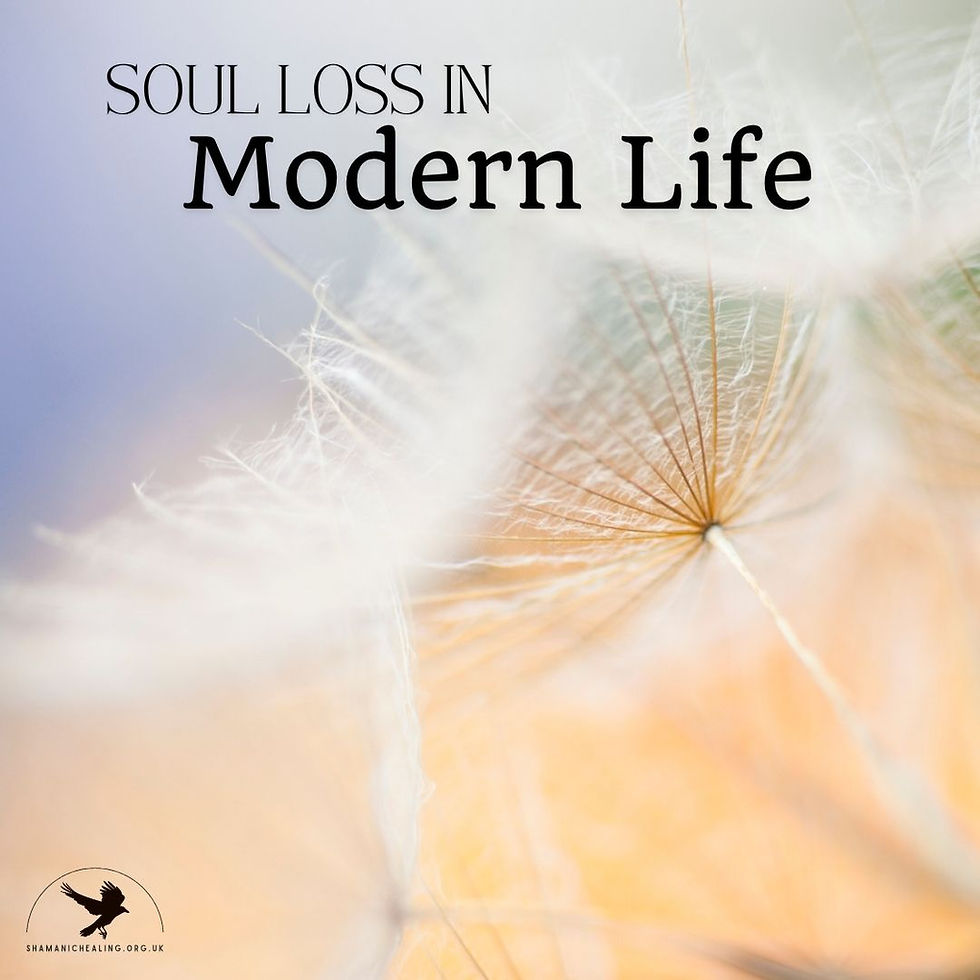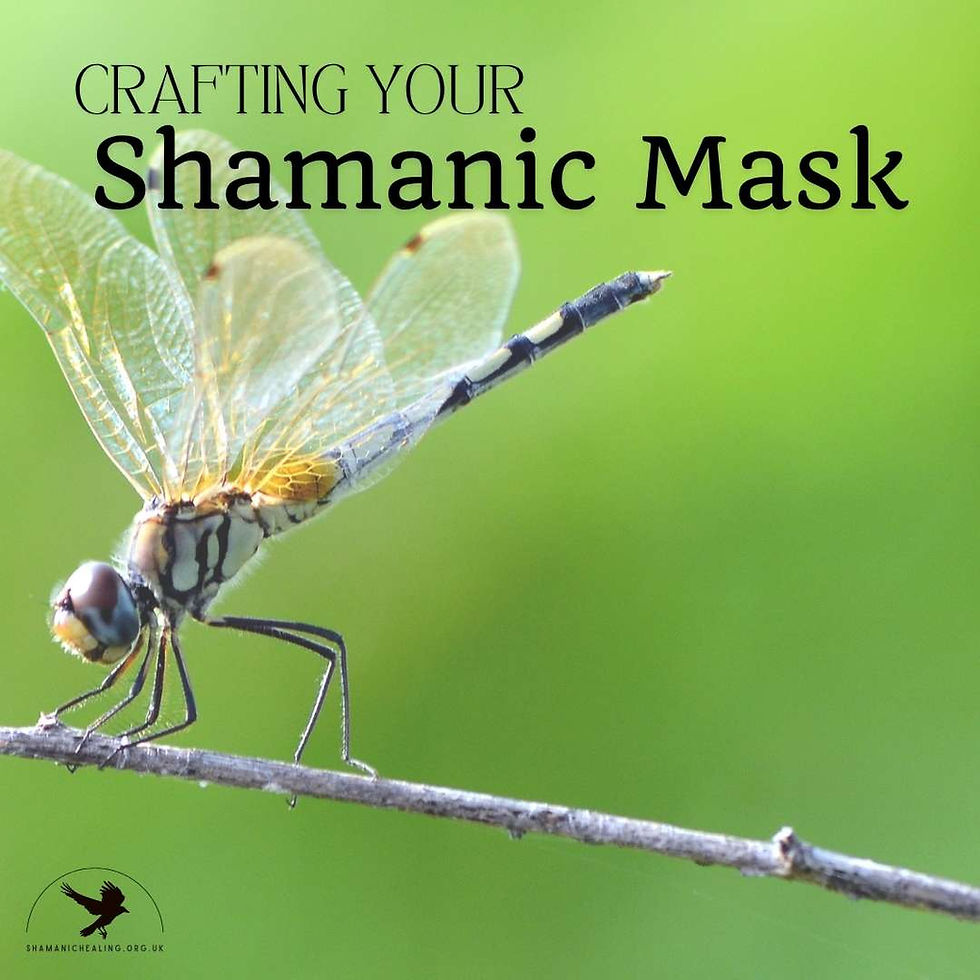What to look for when choosing a Shamanic practitioner course
- Ioan Fazey
- Feb 14, 2024
- 6 min read
Updated: Feb 25, 2025
There are more and more opportunities to learn Shamanic practice, but it can be difficult to decide which course in Shamanic practice is the right one for you. In this article I briefly explain what to look out for when you are choosing a course.
What is a Shamanic practitioner training course?
There are many different aspects that you can learn in Shaman practice. Some of these can be learned separately, but given that the practice is more than just a collection of individual tools and methods, it does not make a lot of sense to learn them without understanding the deeper spiritual practice of which they are a part.

A typical Shamanic practice training course is then usually one that occurs over a period of time and involves multiple gatherings or trainings. Its goal is to provide you with enough experience, tools and understanding for you to operate as an independent practitioner, with the ability to work with others for their healing, develop and lead ceremonies and so on. Just like learning any other healing modality or spiritual practice, a practitioner course will also help you in your own healing and transformational journey. Most practitioners embarking on such a training programme are very different at the end to when they started. An effective practitioner training course will thus also be designed as a process of transition and initiation into a different way of being and relating to the world.
Below are 13 things you might want to consider when looking for a practitioner training course.
13 things to look for in a Shamanic practitioner training course
The teacher: The most important aspects of a course is its teacher. You will need to feel comfortable with them and they should have considerable experience. Look for one that has received extensive training and has learned another experienced teacher. You can learn more about what to look for in a teacher in this article.
Experiential approach: The way a course is approached and taught is important. Ultimately, Shamanic practice cannot be learned without engaging with it directly or from experience. While some direction and explanation will be needed, the most effective way to learn the practice is to do it, reflect on it, share the experience with others and learn from their experience, and then have time to integrate the experience. So when you are looking for a course on Shamanic practice, try and get a sense of how much ‘hands on’ time you will have, whether it will be experiential, and avoid those that rely heavily on a didact (lecturing) style.
A programme designed for transition: Learning about Shamanic practice is usually involves a process of transition and change. This can happen in numerous ways, such as through experiencing deep forms of energetic healing or by opening you up to other forms of perception and ways of knowing which shift the way you relate to the world. Such processes of change take your mind and body time to integrate and make sense of. So, a programme to develop your capacities as a Shamanic practitioner would be designed as a transition in some way.
Time frame: There is a lot to learn if you want to be an independent Shamanic practitioner, and much that you also need to practice if you are to be ready to work with and heal others. Because trainings also tend to involve considerable personal development, then you also want to make sure that there is sufficient time between gatherings for you to integrate any healing and change. So, look at the number of days of training you will receive and how it is interspersed. Don’t rush it, and if a course is less then a year long, then do ask about how such a short course will allow you to integrate the training.
Diverse activities: The mind and body will cope better with any healing and transition that may occur in Shamanic training if it includes diverse kinds of activities. A good training programme or course would then involve the interspersal of a range of different activities, such as working indoors/outdoors; combining art based/discursive/meditation practices; quiet/engaged time; ceremony, dance and plenty of practice applying different healing methods and other ways of perceiving, such as divination. In short, look for diversity.
Engagement with nature: Shamanic practice is ultimately about learning to engage with the consciousness of all that is alive. It is therefore very much based on how we relate to and engage with the natural world. While it can be difficult for teachers to find venues that cater for everything, and courses will often be in urban settings to aid access to participants, do look for a venue that has access to the outdoors and a programme that involves exploring within it.
A sacred space: Shamanism is a spiritual practice. A good programme will then be based in a venue that is then also sacred in some way and where the space is nurtured for spiritual development. It might be a church hall or other spiritual venue and generally not one used for parties and more general activities. Being in a sacred space helps provide opportunities for transformation and transition. It is also important that a venue is quiet and not disturbed by other people.
Numbers of participants: The numbers of participants on courses vary greatly on Shamanic training courses. On a longer Shamanic practitioner programme, however, you will be learning together over time, and intensively, and will need to develop close relationships. As such, I would be questioning the value of a course with more than about 20 participants. Having more participants can still work well, but it would be worth enquiring how this will be supported, such as whether there will be associate teachers present.
Opportunities to develop trust with fellow learners: In a longer-term practitioner training course, it is important that you are given the opportunity to develop trust and relationship with other participants. So look for programmes that have the same cohort throughout and over multiple gatherings. Going through the training process together can help you go deeper in your practice and lead to your own community of practice going forward.
Homework: Just like learning any healing process it is important that you are given ample opportunities to practice. As such, I would choose a programme that sets work in-between gatherings. This is important for you to develop as an independent practitioner. The reality is that homework is also helped when it is attached to an incentive, such as when it is a requirement for certification. It need not be onerous or rigidly imposed (e.g. it doesn’t need to be ‘assessed’), but it will support your development.
Teaches you diverse aspects of Shamanic practice: An extensive practitioner course will introduce you to a very wide range of practices, ranging from working with the dead and dying, learning different healing practices, tapping into ancestral realms, land healing and ceremony. You can see a list of some of the things you might look out for here.
Pre-requisites: Most practitioner training courses require you to have undergone some form of introductory training prior to being accepted on a programme. This will enhance the practitioner course in two main ways. First, it guarantees a base level of knowledge already gained by your fellow participants, enabling the programme to go deeper, more quickly. Second, embarking on Shamanic practitioner training is a significant commitment, and a pre-requisite then ensures that participants on a course already know it is for them. So, if a programme does not have a pre-requisite, you might want to ask a teacher how people with different levels of experience will be supported and integrated.
Accreditation: Most people who take a practitioner training course are not motivated by a certificate. In our contemporary world, however, it can be useful in several ways, such as when applying for insurance or joining an association of practice. Undergoing Shamanic training can affect your life in many ways, and don’t be surprised that after a period of extensive training that you will be drawn to using your newfound skills in unanticipated ways. So its worth keeping your options open by being able to show some evidence of the extent of training that you have received.
For more information, see also the articles on:



Comments